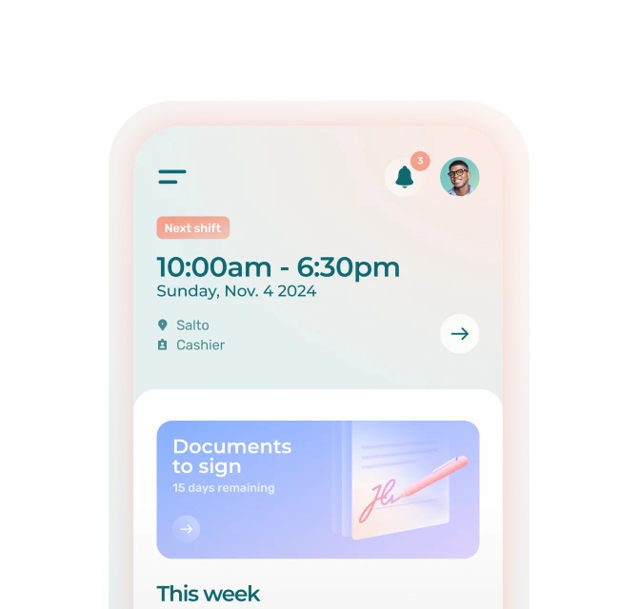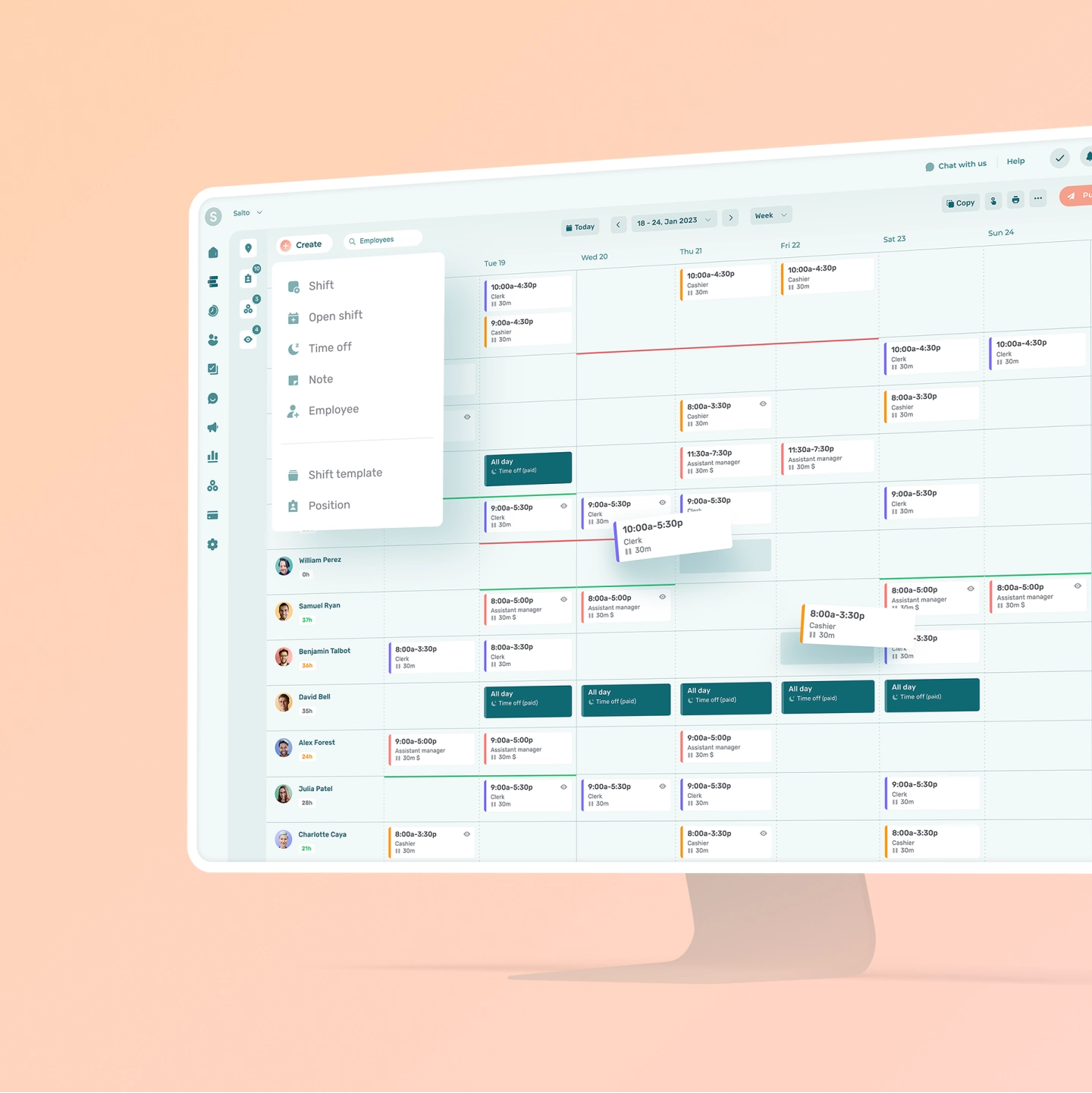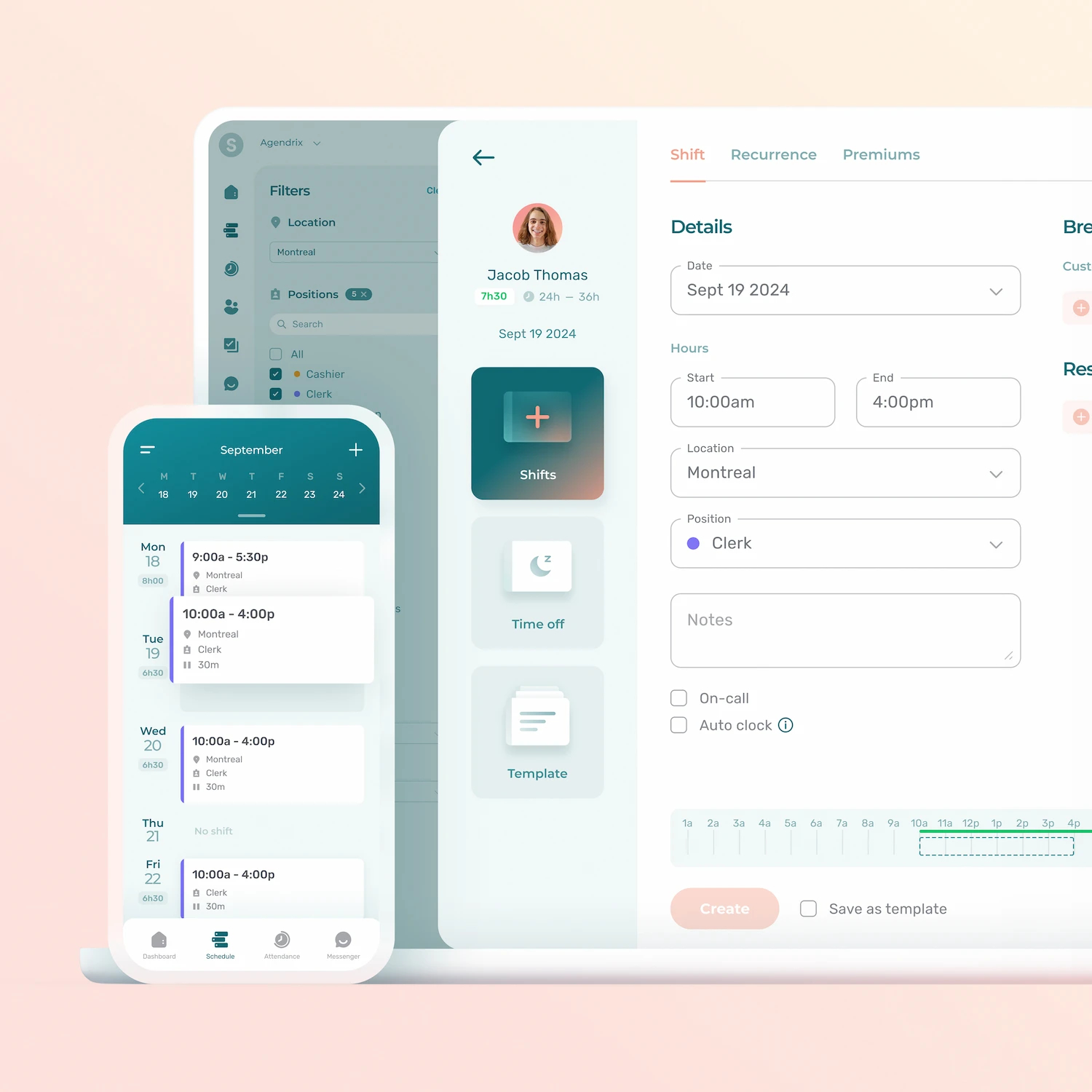Overtime might seem like a natural part of running a business, especially during peak periods or when unexpected absences occur. Your team might power through it for a while, but at what cost?
Overtime isn’t inevitable. With the right strategies—and a little help from smart scheduling tools—you can reduce unnecessary extra hours and create a work culture that respects both time and people.
In this article, we’ll walk you through practical tips to minimize employee overtime.
Frequent Causes of Employee Overtime in the Workplace
Overtime isn’t always a sign of hard work—it can also reveal deeper operational inefficiencies, resource gaps, or communication breakdowns.
Identifying these root causes helps leaders make smarter, more sustainable decisions.
Industries Where Overtime is Most Common
Wondering if your business is doing a good job at controlling overtime hours? Below are industries where employee overtime is a common occurrence.
- Retail – Overtime is common during busy periods like holidays, sales, or inventory management.
- Pharmacy – Employees may work overtime due to high demand for medications and healthcare services, especially during flu seasons or emergencies.
- Retirement homes – Healthcare staff often work overtime due to staffing shortages, emergencies, or the need for around-the-clock care.
- Construction – Overtime is frequent to meet project deadlines, particularly in seasons with better weather or during urgent projects.
- Restaurants & bars – High demand during weekends, holidays, and special events can lead to overtime, especially for kitchen and waitstaff.
- Hotels & hospitality – Busy tourist seasons, conferences, or large events can result in overtime for front desk, housekeeping, and event staff.
- Events & recreation – Event preparation and cleanup, particularly for large-scale events, can extend work hours beyond regular shifts.
- Seasonal & tourism – During peak travel seasons, businesses may require extra hours to handle the influx of tourists and related services.
- Cleaning services – Overtime may occur to meet deadlines for cleaning large spaces or during busy periods like event cleanups.
- Catering – Large events or back-to-back bookings can lead to overtime for food prep, service, and cleanup.
- Healthcare – Nurses, doctors, and support staff frequently work overtime due to the 24/7 nature of care and staffing shortages.
- Home care – Overtime is common when clients need extended care or if there are scheduling gaps between caregivers.
- Security services – Overtime is typical to ensure continuous coverage, especially in high-demand or emergency situations.
- Cities & municipalities – Public services such as roadwork, emergency response, or seasonal tasks (e.g., snow removal) often require overtime.
1. Inadequate Workforce Planning
Poor planning is one of the most common reasons overtime happens. When shift coverage doesn’t reflect actual business needs—like customer volume or production schedules—teams are left scrambling to keep up.
The result? Employees working past their regular hours just to close the gap.
2. Last-Minute Scheduling Changes
Last-minute call-ins, shift swaps, or scheduling errors put managers in a tough spot. When there’s no backup plan, the easiest (and most expensive) solution is to ask someone to stay late.
Over time, these quick fixes become routine and drive unnecessary overtime.
3. Staff Shortages
Whether due to hiring delays, illness, or turnover, a lack of staff quickly leads to burnout. The team has to pick up the slack, often by staying longer or coming in on days off. This creates a cycle where overtime becomes the only way to keep operations running smoothly.
4. Poor Communication
Misunderstandings about responsibilities, expectations, or shift changes can seriously impact productivity. When employees aren’t clear on what needs to be done—or when—tasks pile up or get duplicated. This kind of confusion often forces teams to work longer just to stay on track.
5. High Turnover Rates
When people leave and positions stay unfilled, existing employees feel the strain. Training new hires takes time, and until they’re fully up to speed, others must absorb the extra workload.
This often means staying after hours or taking on more than their share.
6. Bad employee culture
In some workplaces, staying late is seen as a sign of commitment—even if the work could’ve been done during regular hours.
This unspoken pressure leads employees to put in extra time, whether it’s needed or not.
Sometimes, it’s not just the culture among employees—managers themselves may unintentionally model or encourage unhealthy work habits.
5 Tips for Minimizing Employee Overtime
There are a few things business owners can do to prevent unnecessary extra hours.
1. Improve Employee Onboarding
A well-structured onboarding process ensures employees are fully trained from the start and understand expectations around work hours and overtime policies. When employees understand their roles and responsibilities clearly, they can perform tasks more efficiently, reducing the likelihood of needing to work overtime to meet deadlines.
How to apply this in your management:
Schedule a one-on-one follow-up meeting at the end of an employee’s first week to review expectations around scheduling and overtime. Clearly walk them through how to track their hours in your system (e.g., Agendrix), and provide real examples of how overtime is handled.
2. Improve Employee Scheduling
Using employee scheduling software like Agendrix allows you to create balanced schedules and better distribute work evenly among employees to prevent unnecessary overtime. You can track hours worked and make real-time adjustments when employees approach overtime thresholds, enabling you to reassign tasks or shift schedules as needed.
How to apply this in your management:
Use your scheduling tool’s weekly view to spot employees nearing overtime. During your weekly team check-ins or manager huddles, proactively redistribute hours or tasks to other team members before overtime is triggered.
3. Improve Employee Communication
Encouraging open communication about shift changes or potential overtime allows employees to notify managers in advance if they’re approaching their maximum hours. This gives you time to arrange coverage or adjust shifts without needing to resort to overtime.
How to apply this in your management:
Post a weekly reminder in your team’s communication tool (like Slack or Agendrix messages) encouraging team members to flag any concerns about hitting overtime. Make it clear who they should talk to and emphasize that proactive communication is always appreciated.
4. Improve Employee Well-Being and Work-Life Balance
Supporting your team’s well-being isn’t just a nice-to-have—it’s a strategic move that pays off in productivity, retention, and overall team performance. When people feel respected and supported, they naturally work more efficiently—often within regular hours.
How to apply this in your management:
Check in with team members regularly in one-on-one meetings—not just about work, but also about how their current schedule supports their personal needs. Be ready to adjust shift patterns if someone is showing signs of burnout or work-life imbalance.
5. Improve Company Policies and Culture
Sometimes, the problem isn’t the workload—it’s the workplace mindset. In many companies, staying late is quietly rewarded, even when it’s not necessary. Set clear guidelines around overtime—when it’s allowed, how it’s approved, and how it will be compensated. Make sure everyone, from new hires to long-time staff, understands what’s expected.
How to apply this in your management:
Make your overtime policy visible—on your employee portal, in break rooms, and during onboarding. Talk about it openly in team meetings to reinforce that staying late shouldn’t be a badge of honor, but rather a last resort when truly needed.
6 Overtime Best Practices for Canadian Businesses
1. Stay Informed About Employment Standards
Each province and territory has its own specific employment standards regarding overtime, so it’s essential to stay informed about the laws applicable in your region. This includes understanding different thresholds for overtime, industry-specific exemptions, and record-keeping requirements.
2. Clarify Overtime Policies
Establish clear written policies regarding overtime expectations and procedures to avoid confusion and disputes. Communicate these policies to employees to ensure everyone understands how time & attendance is tracked and compensated.
3. Conduct Regular Audits
Periodically review your timekeeping and payroll processes to identify discrepancies before they become larger issues. This proactive approach can prevent compliance problems and improve overall accuracy.
4. Invest in Training and Education
Ensure that both management and staff understand the different ways to clock, the importance of accurate time tracking and overtime policies. Training can help minimize errors and promote a culture of compliance within the organization.
5. Consult HR Professionals
When in doubt, consult with HR professionals, labour lawyers, or payroll specialists to navigate the complexities of overtime laws and best practices. They can provide tailored advice to ensure compliance and mitigate risks.
6. Use automated time tracking software
Implementing automated time tracking software like Agendrix can significantly streamline the process of tracking employee hours and calculating overtime. These tools reduce the risk of human error by automatically recording work hours, alerting you to potential overtime, and generating accurate timesheets for payroll.
By leveraging technology, you save time, enhance accuracy, and ensure compliance with labour laws, all while allowing your team to focus on more strategic tasks.
Additionally, many of these tools offer mobile capabilities, enabling employees to clock in and out easily, which can improve overall accountability and engagement.
How Can a Time Tracking Software Help With Overtime Management?
Staying on top of overtime is essential—not only for compliance, but also for maintaining employee trust and managing labour costs. Agendrix makes it easy to track hours accurately and transparently. With built-in time tracking and scheduling features, managers can ensure every minute of overtime is properly recorded and paid.
No more guesswork, no more disputes—just peace of mind.
Overtime Isn’t Inevitable, but Managers Play a Key Role
Managing employee overtime may seem daunting at first, but you can confidently handle the process. With the right knowledge and by leveraging automated, user-friendly software like Agendrix, you can ensure accurate calculations and stay compliant with labour laws. Even better, you’ll be able to free up valuable time so that you can focus on growing your business and creating a positive work environment for employees.
Why is it important to reduce employee overtime?
Limiting overtime helps control labor costs, prevents burnout, and supports a healthier work-life balance. It also improves productivity and contributes to a more positive, sustainable workplace culture.
What are the most common causes of employee overtime?
Common causes include poor workforce planning, last-minute scheduling changes, staff shortages, unclear communication, high turnover, and a workplace culture that rewards overworking.
How can scheduling software help reduce overtime?
Tools like Agendrix allow managers to create balanced schedules, track hours in real time, and get alerts when employees approach overtime thresholds—enabling timely adjustments and smarter decisions.
Do I need a formal overtime policy?
Yes. A clear, written overtime policy prevents misunderstandings and ensures employees know when overtime is allowed, how it’s approved, and how it’s compensated.
How does employee training reduce overtime?
Properly trained employees are more efficient and require less supervision, which means they’re less likely to need extra time to complete tasks. Training also helps reduce errors and unnecessary rework.
What is the manager’s role in minimizing overtime?
Managers must plan schedules accurately, redistribute hours proactively, maintain open communication, and monitor team well-being to prevent overtime from becoming routine.
Which industries are most affected by overtime?
Retail, hospitality, healthcare, construction, event services, and cleaning services often deal with frequent overtime due to fluctuating demand, tight deadlines, or labor shortages.
Is employee overtime always legal in Canada?
Yes, but it’s regulated by federal or provincial employment standards. Employers must know the specific laws in their region, including thresholds, exemptions, and pay requirements.
What’s the best way to track overtime?
Using automated time tracking software is the most accurate and reliable way. These tools minimize errors, streamline payroll, and help businesses stay compliant with labor laws.
How can I promote a healthy workplace culture around overtime?
Set clear boundaries, recognize employees for efficiency—not long hours—and discuss expectations openly. Lead by example and make it clear that overtime should be the exception, not the norm.













